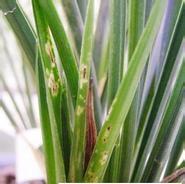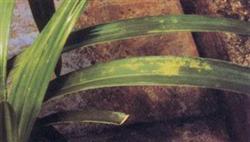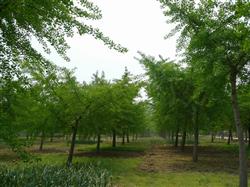Several common orchid viruses and their transmission routes

1. Common orchid virus 1. Cymbidium mosaic virus CymbidiumMosaicVirus referred to as CyMV (1) Cymbidium mosaic virus infected orchid plants often have a tendency to produce gangrene, such as black gangrene spots, gangrene stripes and so on. In addition to gangrene in the leaves and stems of susceptible plants, gangrene also occurs in flowers, which is a unique disease of Cymbidium mosaic virus. The susceptible orchid varieties are Orchid, Cardelia orchid, Oncidium, Tiger Orchid, Wandai Orchid and Phalaenopsis. Gangrenous spot sometimes occurs only on the lower surface of leaves but not on the upper surface, which occurs on Oncidium, Dendrobium, Wandai orchid and Phalaenopsis, so it is often mistaken for fungal infection by growers. Some Cymbidium plants infected with Cymbidium mosaic virus, such as Cymbidium, Cymbidium, Oncidium and Phalaenopsis also produce yellow-green mottled mosaic or yellow stripe disease. In addition, some orchid species do not show any identifiable symptoms after infection. (2) virus characteristics and mode of transmission Cymbidium mosaic virus is a kind of potato virus X (potexvirus). Although the extracellular stability of this virus is not as stable as that of tobacco mosaic virus, it is also a very stable genus of known viruses. Its granules are slightly flexible, the length is about 450nm, the extracellular heat-resistant temperature is 60 ℃ to 70 ℃, and can survive for 25 days at room temperature. At present, no vector insect that can transmit Cymbidium mosaic virus has been found, and its route of transmission is exactly the same as that of glossy orchid ringspot virus, which is invaded and infected by root mechanical wounds. two。 OdontoglossumRingSpotVirus OdontoglossumRingSpotVirus referred to as ORSV (1) Disease it is reported that more than 20 genera of orchids can be infected with the virus. The diseases caused by different orchids or orchids will be different. Orchids such as Phalaenopsis, Oncidium, Cartland, Orchid, Magnolia and Cymbidium are often easily infected by orchid ringspot virus, especially Phalaenopsis. The disease of dentoglossal orchid ringspot virus was first recorded in the literature. in addition, mosaics, stripes, yellow stripes, color stripes and even gangrene were recorded. Mosaics and stripes are the most common among these diseases. In addition, some orchid varieties did not show symptoms after being infected with orchid ringspot virus, which is particularly common in the seedling stage of Phalaenopsis and Oncidium, and the infected plants usually show symptoms only after the first flowering. In addition, it is very common for Cymbidium mosaic virus and glossy orchid ringspot virus to co-infect the same orchid plant in artificial orchid garden, and the disease will be much more serious than that of single virus infection. (2) virus characteristics and mode of transmission of Dentodon glossy ringspot virus is a kind of tobacco mosaic virus (Tobamovirus). The granule is in the shape of a short hard rod with a length of about 300 nm. The common characteristic of the virus is that it is extremely stable, has strong extracellular heat tolerance in the host, and can survive for quite a long time at a temperature as high as 95 ℃. According to the report of Japanese scholars, the orchid ringspot virus can survive outside the cell for more than 10 years under 20 ℃. It is a highly stable infectious virus. The virus can only invade plants through mechanical wounds, so in the process of tissue culture or greenhouse cultivation and management, all operations that may cause surface wounds, including flower stalks, pruning, and even friction between plant leaves, may become a way for the virus to invade and infect. So far, it has not been confirmed that toothed glossy ringspot virus can be transmitted by any specific vector insects. However, any insect or small animal that may cause mechanical damage on the orchid plant, such as cockroaches and snails, will increase the possibility of orchid ringspot virus infection, which should be prevented. 3. Cucumber mosaic virus CucumberMosaicVirus referred to as CMV (1) the earliest record of cucumber mosaic virus infecting orchids was found in Phalaenopsis. The disease recorded at that time was the appearance of yellowing stripes parallel to the veins on the leaves of the plant. Cucumber mosaic virus can also cause discoloration or stripes in the petals of safflower strain Phalaenopsis. In addition, cucumber mosaic virus infection has been found in Oncidium specimens. The leaf of the specimen showed no obvious speckle disease, and the yellow stripes parallel to the leaf vein could be seen, but the plant size was not different from that of the normal plant. (2) virus characteristics and mode of transmission. Cucumber mosaic virus is a kind of cucumber mosaic virus (Cucumovirus). The granules are spherical ones with a diameter of 28 nm. The virus has a wide host range and can infect more than 800 species of plants belonging to 85 families and 365 genera. Cucumber mosaic virus infection has been recorded in most important cash crops in many areas of China, and its population is very common in the field. The virus can be transmitted from wounds caused by mechanical friction. In the field, aphids are mainly transmitted by aphids in a non-sustainable way. Because there are many kinds of aphids that can transmit cucumber mosaic virus, the virus population is widely distributed. The best way to prevent and cure orchid virus disease is to prevent its introduction before the disease occurs, that is, to thoroughly understand all possible transmission routes and sources of the virus, and then block it completely, so as to put an end to the opportunity of virus introduction. 1. The way of virus infection in the production of orchids. The main results are as follows: (1) if the infected plants are used as the parents of pollination, the pods are used for aseptic sowing to reproduce seedlings, and the infected pods and villi contain high concentrations of virus, which will contaminate the seeds and medium in the sowing process. Because orchid ring spot virus and cymbidium mosaic virus are extremely stable viruses, they can survive outside the cell for a long time. After the orchid seeds germinated, the virus infected some of the seedlings due to the wound invasion caused by the human transplant operation. These seedlings become the source of virus infection, continue to pollute other plants in subculture, and even become a source of virus pollution and infect other orchid seedlings in the process of seedling maturation and colonization. (2) because the varieties of the plants that had been infected with the virus met the market demand, the operators carried out meristem culture without virus test, and propagated meristematic cloned seedlings in large quantities, resulting in that all the propagated seedlings carried the virus. (3) although the operators screened out the parents with good characters for virus detection, these parents were just in the period of infection, so the virus concentration in the tissue was low or uneven, and the test results mistakenly believed that these parents had no virus infection. These parents were used to clone the meristem, resulting in the seedlings carrying the virus. (4) the parents with good characters were not infected with the virus, but were contaminated by the virus in the process of tissue culture. If the meristematic seedlings are contaminated by the virus in the mother bottle period, all the seedlings propagated later will carry the virus. According to the investigation, the processes and techniques commonly used in the operation can not completely avoid virus pollution, which may lead to mutual transmission between different batches of orchid seedlings. two。 A mode of operation that may cause a virus infection. (1) incorrect tool disinfection: the operating tools used in tissue culture, such as tweezers and scalpels, must go through sterilization procedures in order to avoid bacterial and fungal infection, so operators can adopt different sterilization methods according to their own habits. Traditionally, high temperature sterilization is mostly used, such as dry heat sterilization in high temperature oven, wet heat sterilization in high pressure sterilizer and flame sterilization in aseptic operating table. As the nature of orchid ringspot virus and cymbidium mosaic virus is extremely stable, in the absence of appropriate and effective eradication methods, the virus is very likely to retain the table or tools that contaminate the aseptic console for a long time. It even pollutes the hands and clothing of operators, thus having a chance to indirectly infect tissue culture seedlings. (2) the petri dish is contaminated: in addition to using the aseptic console for the transfer of tissue culture seedlings, the staff will also use petri dishes or supports to isolate the direct contact between the tissue culture seedlings and the aseptic countertop during the operation. However, if it is not used properly, it will cause pollution between different batches of seedlings. Strictly speaking, petri dishes must be replaced with different batches of seedlings. Because if the previous batch of seedlings is infected with the virus, it may contaminate the surface of the petri dish, and the re-use of the contaminated petri dish will cause the next batch of seedlings to be infected with the virus. (3) negligence and bad habits of staff: negligence or bad habits of staff during operation may increase the probability of tissue culture seedlings infected with virus. For example, hasty and incomplete use of flame disinfection tools, or failure to change petri dishes in time are the key factors that tissue culture seedlings are difficult to avoid virus infection. Managers can take measures to train employees, cultivate their professionalism, strengthen quality control and other measures to reduce the probability of virus infection of seedlings. 3. The tissue culture seedlings were not infected with the virus, but were infected by the virus during colonization out of the bottle. According to the investigation, even if the meristem seedlings do not have virus infection in the bottle, if strict measures are not taken to prevent virus infection in the process of cultivation, virus infection will still occur. These common mistakes include: (1) after the operator removes the seedlings from the bottle, wash the residual medium in the container or treat them with protective agents, if the seedlings of different batches are treated with the same container, and some batches of seedlings carry the virus, the residual virus will contaminate the surface of the container, resulting in virus infection when the next batch of seedlings are reprocessed. If some individuals in the same batch of seedlings are infected with the virus, when all the seedlings are treated in the same container, other individuals will also be infected. (2) the workbench, tools or hands of the staff used in the seedling colonization operation may come into contact with the virus-carrying seedlings and be infected with the virus in the process of transplantation, thus becoming the vector for the transmission of the virus.
- Prev

Infection cycle of orchid virus disease
Viruses are parasites in living cells. It does not have the ability to destroy plant cell walls, nor can it carry out saprophytic life on dead cells and tissues as parasitic transition like other parasitic parasites. Therefore, when the virus invades the orchid strain, a slight wound must be required. This kind of wound can cause fineness.
- Next

Five main aspects of management of ginkgo biloba
Ginkgo biloba, also known as ginkgo, is one of the rare and precious fruit trees. Its species, leaves and preparations are widely used. The key points of relevant cultivation techniques are introduced as follows: ginkgo, also known as ginkgo, is one of the rare and precious fruit trees, its species, leaves and preparations have a wide range of uses. Now the key points of relevant cultivation techniques are introduced as follows: one.
Related
- Fuxing push coffee new agricultural production and marketing class: lack of small-scale processing plants
- Jujube rice field leisure farm deep ploughing Yilan for five years to create a space for organic food and play
- Nongyu Farm-A trial of organic papaya for brave women with advanced technology
- Four points for attention in the prevention and control of diseases and insect pests of edible fungi
- How to add nutrient solution to Edible Fungi
- Is there any good way to control edible fungus mites?
- Open Inoculation Technology of Edible Fungi
- Is there any clever way to use fertilizer for edible fungus in winter?
- What agents are used to kill the pathogens of edible fungi in the mushroom shed?
- Rapid drying of Edible Fungi

